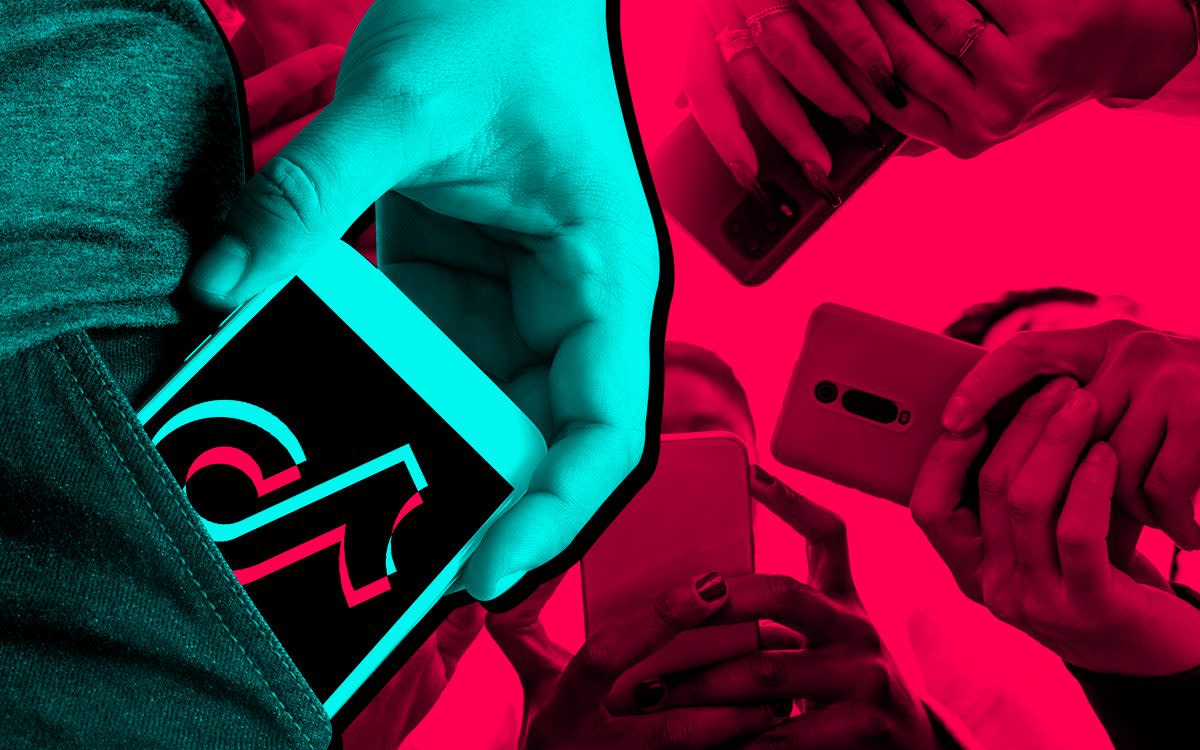TikTok isn't just a threat to our national security – it’s endangering our children's health

TikTok is having a stormy summer. The video sharing platform, which has transformed social media in just five years, is now the most downloaded app in the world, but TikTok was linked to the death of Archie Battersbee, the 12-year-old whose life-support was turned off on August 6 following an extended legal battle. The app has also recently been accused of fuelling a rise in tics in teenage girls and bombarding young men with misogynistic content.
A lockdown hit that won millions over with dancing videos, Tiktok has also become an increasingly popular source of news as younger people eschew “mainstream media”. Last week, it even became a national security concern. Parliament closed its Tiktok account over fears of state surveillance, with Conservative MP Nus Ghani crediting it as a positive step for “showing serious spine in defending our values, protecting our security and sharing our concerns”.
So is TikTok being used as a tool of the Chinese Communist Party, an anarchic playground, an exciting cultural hub or simply a fun, safe space to hang out?
The answer is probably yes to all the above.
What is not in doubt is the extent of TikTok’s reach. This month, it opened a virtual stage at the Edinburgh Fringe with nearly a football team’s worth of TikTok-bred stand-up comedians. It’s also become the UK publishing industry’s new best friend – with sales of forgotten titles soaring thanks to users sharing their favourite titles on #booktok.
Between September and December last year, TikTok.com was the world’s most-popular website with Facebook in third place. It is slaying the social media giants. When Meta recently reported its first ever revenue loss, everyone blamed TikTok.
A leaked internal memo from a Meta researcher showed teenage presence on Facebook had declined by 13 per cent since 2019 and was projected to decline a further 45 per cent over the next two years. Meanwhile, eight new users join TikTok every second, meaning it adds the population of Helsinki to its platform every day. And TikTok is cashing in – its revenues were about $4 billion (£3.2 billion) last year, and should reach $12 billion (£9.8 billion) this year and $23 billion (£18.8 billion) in 2024.
So, where did it all start? The app is an international version of Douyin, a Chinese video app launched in 2016. From the beginning there have been concerns over data privacy. Despite TikTok’s assurances that user data from outside China would be stored on servers in other countries, an investigation by Buzzfeed found that Chinese engineers had access to US data between September and December last year. TikTok says that “today, 100 per cent of US user traffic” is being routed to an American data centre. “We also take our responsibility to safeguard our community seriously, both in how we address potentially harmful content and how we protect against unauthorised access to user data,” it added in a statement in June.
Some experts believe worries over privacy and national security are exaggerated, as Americans in particular are poorly protected by data-privacy laws and most of that information is already easily trawled online. The University of Toronto’s Citizen Lab found no sign that TikTok harvested contacts, photos, audio, video or location data without permission.
“This is really a symbolic response to the bogeyman of the moment,” says Toby Lewis, who spent 15 years in the UK Government’s cyber security threats response unit and is now global head of threat analysis at Darktrace. “We are making the assumption that the Chinese government has access to all TikTok data. TikTok’s user data is things like browsing habits, what videos you like… there could be privacy issues – and it could identify a parliamentarian’s device – but apps can only see a narrow slice of a phone’s overall content.”
Indeed, TikTok collects less data on its users than most social media companies, according to the US Senate. Blake Chandlee, president of global business solutions at TikTok and a former Facebook employee, believes there’s one simple reason for this: “Facebook is a social platform,” he said in June. “We are an entertainment platform. The difference is significant.”
TikTok’s highly-advanced algorithm is not interested in the network of friends, family, and casual acquaintances that users of social media platforms assemble. Instead, it monitors one thing above all else – the amount of time a user spends watching a video. It finds out what you like to watch and shows you more of it.
In that way, it’s closer to Netflix than Facebook. Indeed, it has become the documentary tool of choice for billions – hence suspected people smugglers apparently using the platform to show upcoming dates for future crossings to the UK, an activity TikTok has told The Telegraph has “no place” on the platform.
Its engagement victory is overwhelming. According to digital marketing agency NetworkEC, users are spending 25.7 hours monthly on TikTok, compared to 16 hours on Facebook and 7.9 on Instagram. Researchers at the University of Trinidad and Tobago applied the Facebook Addiction Scale to TikTok users – which includes obsessive thoughts about a platform and trying to cut down on use without success, becoming restless or upset when prohibited – and found just under seven per cent of users were at risk of addiction.
The biggest threat posed may not be what TikTok learns from us, but what we learn from TikTok. Ofcom figures show the app is the fastest-growing news source for UK adults. Seven per cent use the app as their prime current affairs informer – but for teenagers aged 12-15, it’s 28 per cent.
Tiktok’s owner, ByteDance, incorporated in the Cayman Islands with investors including the Cyberspace Administration of China, America’s General Atlantic and Japan’s SoftBank, has been accused of working with the Chinese Communist Party (CCP) to censor user content on controversial topics. The fear of the CCP co-opting TikTok to influence elections hovers at the edge of TikTok discussions – although there is limited academic evidence that any social media platform has had a significant effect on elections.
The Chinese government did request a disguised account to spread propaganda on TikTok, although the request was turned down and TikTok users have intervened in elections and political protests. Twitter and YouTube have been deployed in similar ways, prompting the Government to create a Foreign Interference Offence linking the National Security Bill with the Online Safety Bill at the start of July. This means social media platforms will have a legal duty to identify and minimise state-sponsored or state-linked disinformation interfering with the UK.
Then there’s the issue of duty of care, for which TikTok, like those before it, is coming under heavy scrutiny.
The combination of an algorithm optimised for memes and a teen-heavy user base has made the platform the home of the TikTok challenge – some of which, like the Learn Something New Challenge or the optimistic Empath Challenge, are hard to fault.
Perhaps most controversial has been the Blackout Challenge, which revives an ancient playground dare where users are challenged to hold their breath. The company is facing three lawsuits following the death of three young children, which argue the company “unquestionably knew” that the challenge was going viral and that “failing to take immediate and significant action to extinguish the spread of the deadly Blackout Challenge would result in more injuries and deaths, especially among children.”
Archie Battersbee’s mother, Hollie Dance, has suggested he’d seen the challenge on TikTok. (The 12-year old was found unconscious in April with a ligature around his neck.) TikTok has said the challenge “long predates our platform and has never been a TikTok trend,” adding: “We remain vigilant in our commitment to user safety and would immediately remove related content if found.”

Whatever the facts of the Battersbee case, the app is crying out for regulation. Back in June, TikTok held a corporate breakfast in Mayfair to launch their updated safety strategy, where Alexandra Evans, director of safety, announced new tools designed to help teenagers manage their screen time or, failing that, to help parents manage it for them.
The company continues to insist it can be a force for good. It has recruited tens of thousands of content moderators to cope with forthcoming legislation including the UK’s online harms bill which is expected to classify TikTok as a Category One platform like Facebook and Twitter, meaning it has an onerous set of responsibilities.
However, a recent Wired investigation showed content creators are finding ways around moderation policies instituted in September 2021. The word “suicide” in a video, for instance, triggers the algorithm to censor or remove the clip while searches for the word bring up the number for a local crisis helpline. Instead, users deploy the term unalive – the hashtag #unalivemeplease has 9.2 million views on TikTok; #unaliving has 6.6 million; #unaliveawareness has an additional 2.2 million – while “eating disorder” is “ED,” “self-harm” is “SH,” and “depression” is “d3pression.” TikTok says it is working with the Samaritans Online Excellence Programme, which has developed industry guidelines to minimise access to harmful content.
Facebook may still be the largest platform with 2.5 billion users, but it’s taken the company nearly 20 years to amass those numbers. TikTok took four years to attract one billion users. The company, like its users, may be young but it’ll have to grow up fast.

